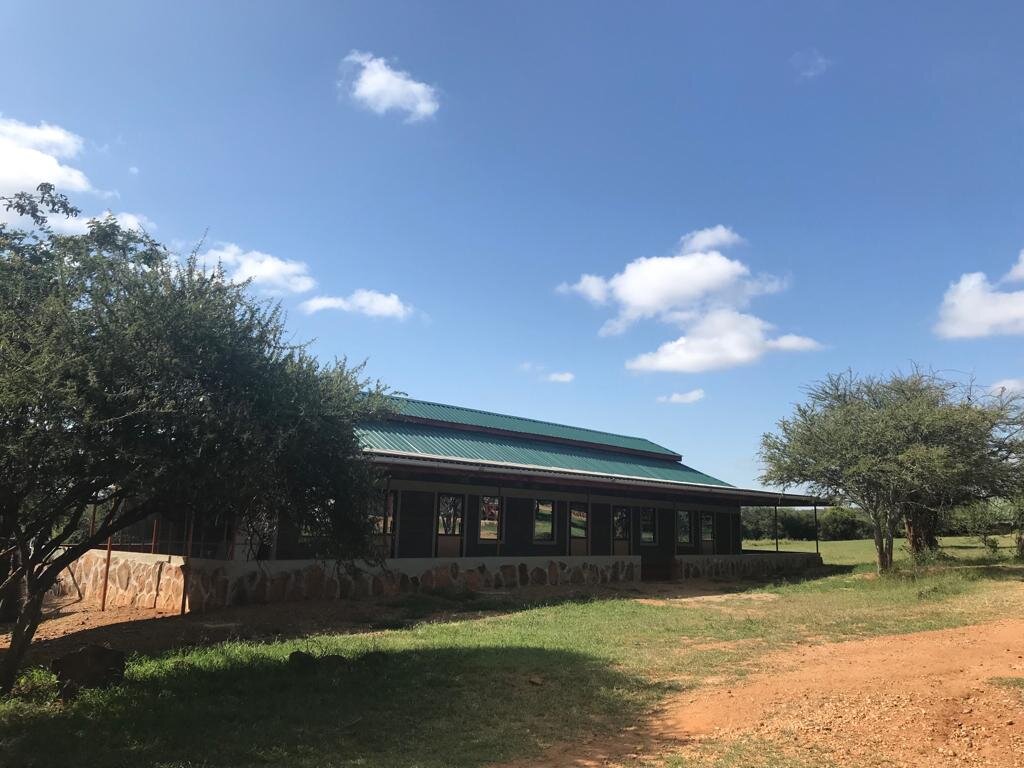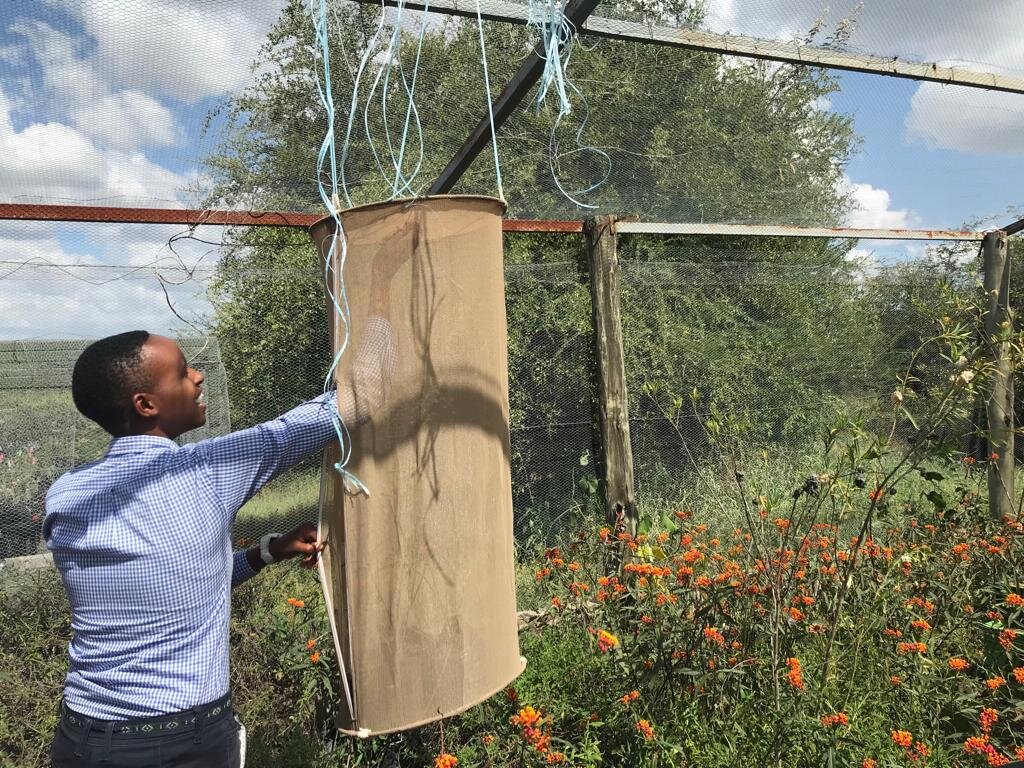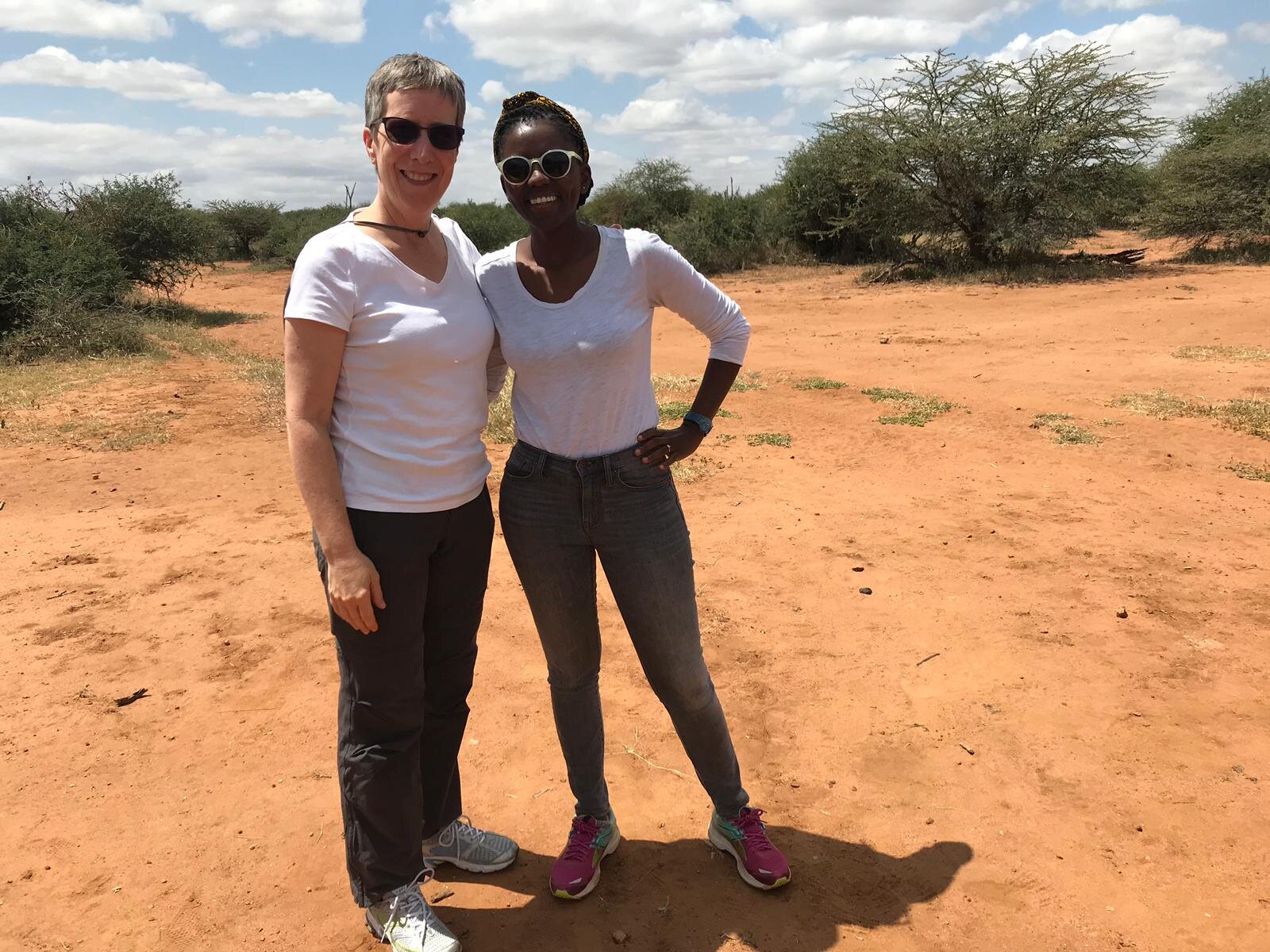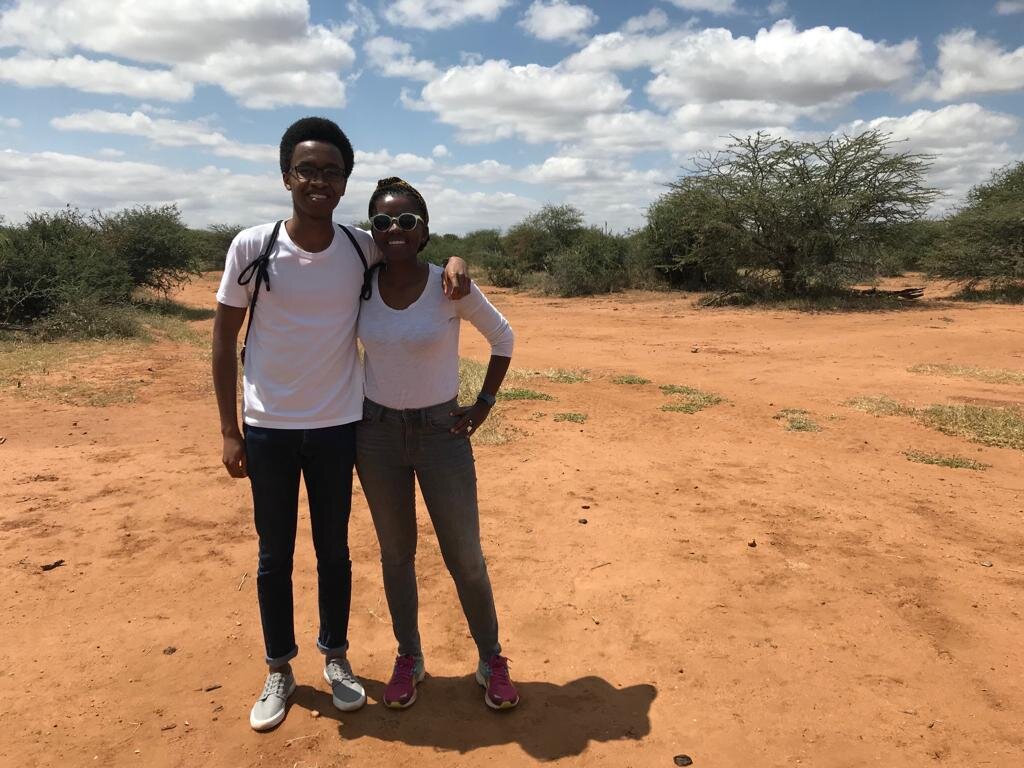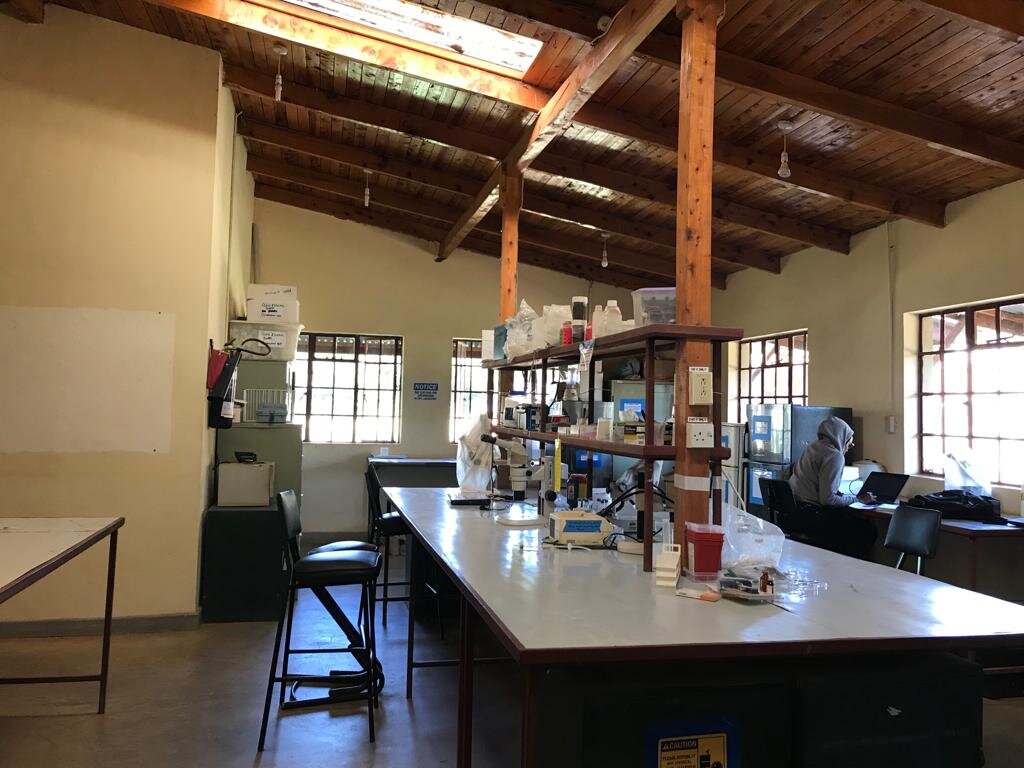A Living Laboratory: Mawazo Visits the Mpala Research Centre
“Mpala is a living laboratory”
A view of the landscape at the Mpala Research Centre in Laikipia County, Kenya.
Author: Maina Wachira
The Rift Valley region, where Laikipia County is located, is home to some of Kenya’s most iconic wildlife and it remains a hotspot for biodiversity at a time when a million species around the world are threatened with extinction, many within decades. As a result, dozens of conservancies have been established in the area over the years, each with its own unique approach to protecting wildlife. At the Mpala Research Centre in Laikipia the goal has always been to blend rigorous scientific research with traditional wildlife conservation. In December 2018, Mpala’s Executive Director, Dr. Dino Martins, invited Mawazo to visit the centre after we profiled him for our Africa Science Week-Kenya 2018 Faces of Kenyan Science Campaign. After deciding to take on Climate and Conservation as our public engagement theme for the second half of 2019, we saw the perfect chance to accept the invitation and meet some of the people fighting to preserve Kenya’s natural heritage. Our visit also coincided with that of Mawazo CEO Rose Mutiso’s former PhD supervisor, Dr. Karen Winey, who is a Professor of Materials Science and Engineering at the University of Pennsylvania. Karen travelled to Kenya from Philadelphia to see her youngest daughter Rebecca, who was finishing up a post-graduate fellowship at Mpala.
One of the interesting things about Mpala is that when you take a game drive, the animals you see are likely to have been studied by Mpala researchers. Currently, Mpala has over 30 active projects covering a wide range of flora and fauna in the region. Take for instance, our attempt to track down Laikipia’s last pack of African wild dogs during one of our morning drives, a species that has been studied by scientists affiliated with Mpala since at least 2001, when the Samburu-Laikipia Wild Dog Project began. The dogs we were searching for were the only members of their species to survive an outbreak of canine distemper in 2017 that killed all but one of the three hundred wild dogs that lived in the county. Luckily, the one dog that survived was a pregnant female that was found and protected only because researchers at the Mpala-based Kenyan Rangelands Wild Dog and Cheetah Project (the 2014 expansion of the original Samburu-Laikipia Wild Dog Project) had been using GPS-enabled collars to track wild dogs for years. Without this prior scientific interest, it is easy to imagine how differently the story of the last surviving African Wild Dog in Laikipia might have turned out.
On the day we found the wild dogs we also drove past one of the eighteen fenced plots that make up the Ungulate Herbivory Under Rainfall Uncertainty, or UHURU, project. Despite its technical name, the basic idea is easy to understand. Each plot has a fence specially designed to keep out plant eating animals of a certain size – for example, one plot might keep out only elephants and giraffes, another might keep out impala and zebras as well, and a third might keep out animals as small as dik-dik and hares. The plots are also spread across parts of the Mpala landscape that get different amounts of rain. The goal is to simulate the extinction of the animals excluded from each plot in order to understand how they shape the landscape and vegetation around them in different climatic conditions. Like many other projects at Mpala, UHURU is a rigorous scientific experiment, nestled within the landscape, that is designed to help us understand the costs of species loss and, as a result, the value of conservation. However, rare and charismatic species do not command all of the scientific attention at Mpala. During our stay, we met researchers studying ants, domestic cattle, the abundant acacia trees of the Laikipia savannah, and more. To quote Dr. Martins, Mpala truly is a “living laboratory.”
We were excited to learn that alongside its record of high-quality research, Mpala shares Mawazo’s interest in making science public and participatory. For example, in 2016, Mpala researchers Dedan Ngatia and Dr. Adam Ferguson started the Laikipia Rabies Vaccination Campaign (LRVC) with Dr. Dishon Muloi from the International Livestock Research Institute. The campaign was designed to protect people and vulnerable wildlife from a potentially deadly disease by immunising the domestic dogs that are often responsible for transmitting rabies. The LRVC has spread to over fifty communities and immunised thousands of dogs, all in an effort to tackle a public health problem. But the ties between science and the public at Mpala run in the opposite direction as well. During the Great Grevy’s Rally of 2018, hundreds of people spread out across the counties of Northern Kenya to collect data on the reticulated giraffe and the Grevy’s zebra, which is the most endangered zebra species as a result of habitat loss and poaching. Citizen scientists collected over 49,000 photos that were then fed into software capable of analysing the pattern on the Zebras’ hind legs to uniquely identify individuals, a bit like an animal fingerprint. This data helped produce a newer, better estimate of the Grevy’s zebra population in Kenya. Through their Mpala Live platform, Mpala also extends its public engagement reach to the global community by offering people across the world freely available live video of wildlife, accompanied by e-learning material that has already been adopted by schools and conservation clubs in Northern Kenya.
However, it would be a mistake to think that public engagement at Mpala does not involve engaging the local community as well. At the centre we saw several sign-up sheets for Mpala’s annual Community Conservation Day. The tradition began in 2009 after Mpala board member and Princeton University zoologist, Dr. Daniel Rubinstein, and his wife, Nancy, helped establish the Northern Kenya Conservation Clubs program in schools across the region to encourage local children to participate in conservation. During the term, the clubs meet once a week to give students hands-on lessons about the natural world and the role they can play in protecting it. This all comes to a close on a Saturday in July each year, when hundreds of students from individual clubs present their conservation-themed projects at Community Conservation Day. Importantly, this kind of engagement has left its mark on Mpala’s research staff. Wilson Nderitu, the current Head Field Assistant and Conservation Club Coordinator, was born and raised in the area inspired by the research he saw taking place at Mpala, he has now spent over a decade working as a technician on a project studying the behaviour of Superb Starlings, a local bird species.
Admittedly, the highlight of our visit was getting to meet several young and talented Kenyan scientists who were at Mpala because of the centre’s close partnerships with Kenyan universities like Egerton and the University of Nairobi. During our trip, we had the opportunity to talk to Leo Malingati, the project manager of the UHURU project, Ivy Ng’iru, whose research involves the African Queen, a butterfly species, as well as research into the use biological controllers to control local buffalo grass that may be useful in managing invasive variants of buffalo grass in Mexico. We also met Maureen Kamau who is currently at Mpala as a non-residential fellow of the Smithsonian’s National Zoo’s Global Health program. Her work takes an inclusive approach to health that seeks to improve the lives of wildlife, people, and domestic animals. Apart from their willingness to take the time to discuss their work with us, we were struck by the enthusiasm of all three researchers. We were also pleased to learn that Kenyan students and interns at Mpala can leverage their experience to gain admission to doctoral degrees at prestigious universities and research institutions around the world, who partner with Mpala.
Mawazo’s two days at Mpala were packed with sights to see and science to learn. From what we know, Mpala is gearing up for many more years of strengthening Kenyan science, as shown by the recent completion of their genomics lab which will help contribute to the wider effort to turn Kenya into a country known not just for its field sites, but also for its original contributions to conservation science. As we begin to delve deeper into climate and conservation and its impact in the region, the experience has helped sharpen our sense of which questions matter, and how to get the public engaged with them.
